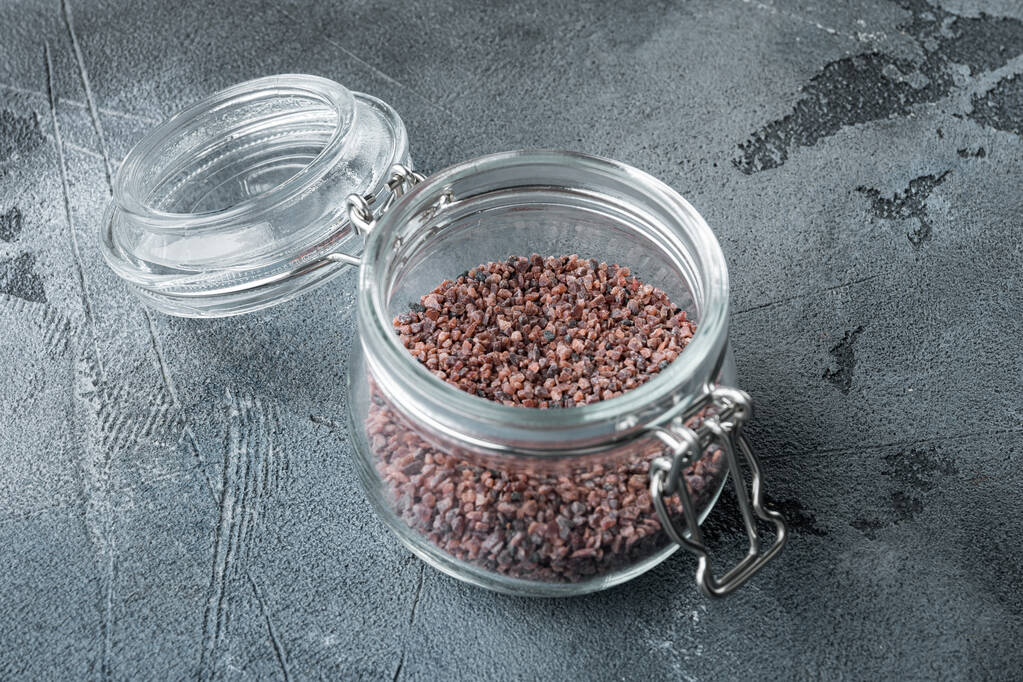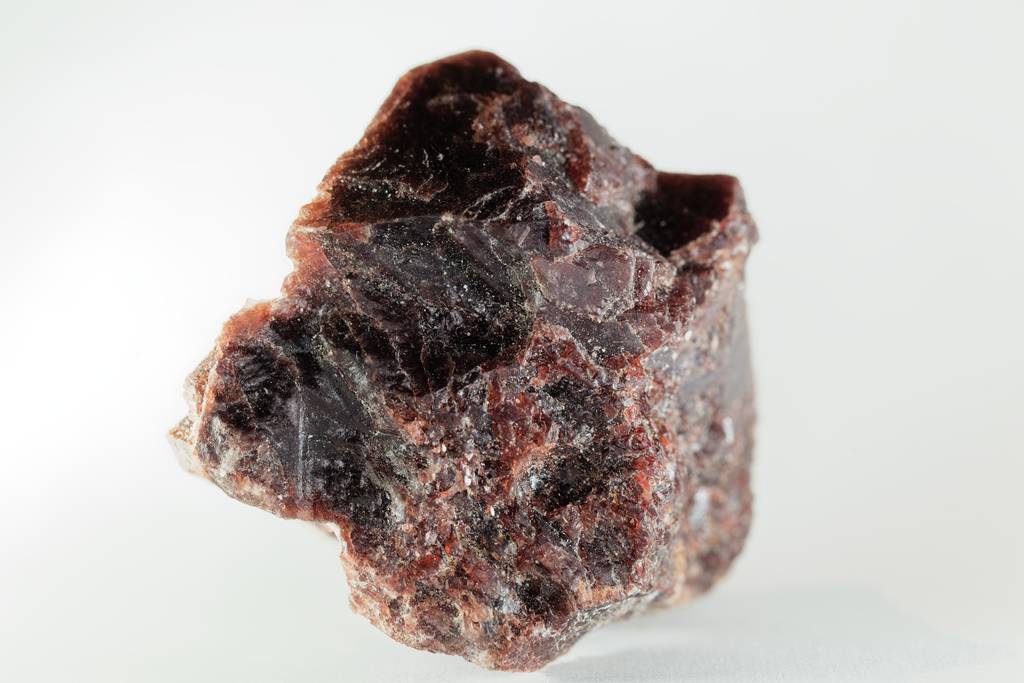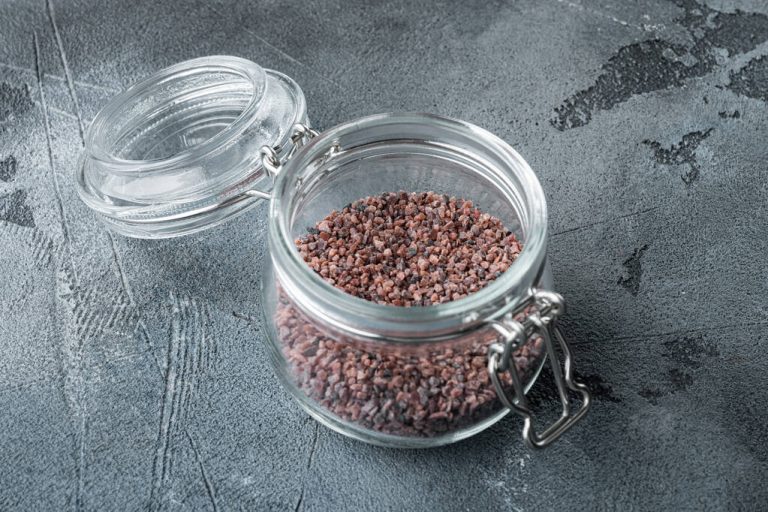Kala Namak, also known as black salt, smells like rotten eggs – and is still popular in vegan cuisine. We explain what you need to know about the special salt from India.
In this article you will learn what kala namak is, how you can use it in the kitchen and what you should pay attention to when buying it.

Black Salt: Peculiarities of Kala Namak
Kala Namak originally comes from India and is widely used there and in other South Asian countries. Although it’s called black salt, it’s more of a reddish-dark purple color – mainly because of the iron it contains.
But it’s not just the color that makes Kala Namak so unusual: the salt smells like rotten eggs, which is due to the sulfur compounds it contains. This is why Kala Namak cannot convince every nose, but most palates can if used correctly: A little Kala Namak gives dishes the typical egg taste. Therefore, the salt is particularly popular with vegans and egg allergy sufferers.
Characteristics of Kala Namak:
Colour: dark red, dark violet, black-greyish
Taste: salty, sulphurous, like egg
Odour: sulphurous, like slightly rotten eggs
Origin: India, Pakistan
Trade names: Kala Namak, Black Salt, Black Salt, Rock Salt, Saindhav, (Indian) Sanchal
Kala Namak: Crafting
In the traditional production process of Kala Namak, rock salt from the Himalayan mountains is mixed with charcoal, spices, herbs and the seeds of the harad plant and heated. This process is no longer common for commercial distribution. There are two main ways to make black salt:
Kala Namak with Harad seeds: Rock salt (often from the Himalayas) is boiled with Harad seeds (fruits of the Terminalia chebula plant)
Synthetic black salt: Sodium chloride is mixed with sodium sulfate, sodium hydrogen sulfate and ferrous sulfate and reduced with charcoal
Both versions of Kala Namak are very similar in terms of taste and appearance. The “real” black salt is considered to be of higher quality and is usually a little more expensive.

Kala Namak in the kitchen – recipe ideas and tips
No other vegan food tastes as close to a boiled egg as Kala Namak. That’s why black salt is so popular in vegan diets and it’s hard to imagine life without it.
Kala Namak is therefore suitable for all dishes in which you want to imitate eggs, for example:
vegan scrambled eggs with tofu or chickpea flour – with some turmeric for the yellow color
vegan shakshuka with chickpea flour and oatmeal
Avocado, finely seasoned with black salt – for example on a slice of bread
vegan omelette
vegan egg salad
Poor Knight (French Toast) as a vegan variant
In Indian cuisine, on the other hand, kala namak is used in a completely different way. There it is mainly an ingredient in chutneys, fruit salads, chaats or raitas. But you can also add Kala Namak to fruit juice drinks and long drinks.
In any case, you should only use black salt sparingly – otherwise the peculiar taste will quickly become too much.

